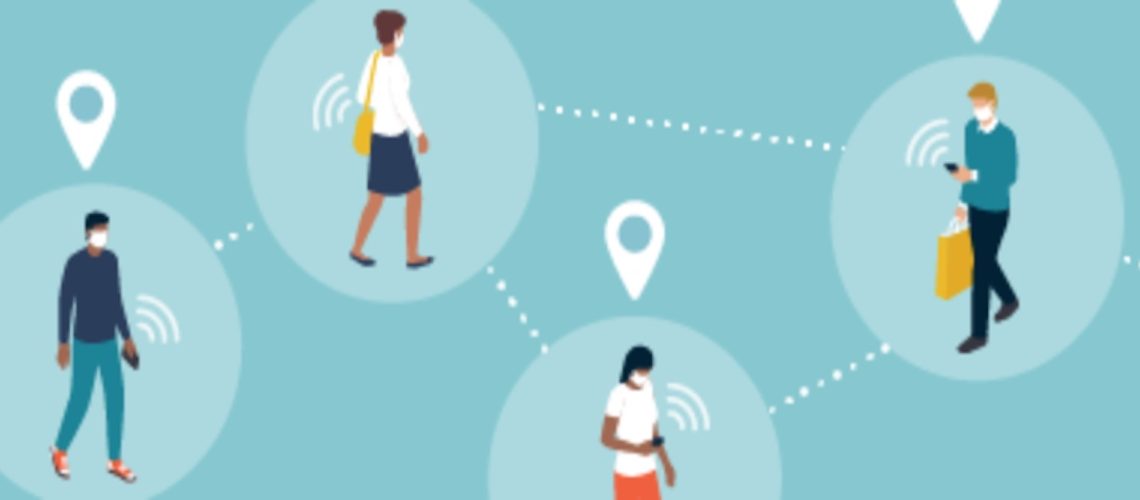Until there is a vaccine, the single most important defense against the spread of COVID-19 is contact tracing.
If public health officials can learn who an infected individual has been in contact with, there is a chance to stop or slow the virus’ spread. Without contact tracing, the virus remains invisible, silent and fast as it moves from host to host. Testing is critical, of course, but contact tracing reaches multiple more potential cases beyond each positive test.
COVID-19 spreads so easily and quickly that it moved around the globe in days, from China to the Middle East, Europe and the United States. Contact tracing efforts on a wide scale have not kept up, although they’ve been helpful in some limited areas, like New Rochelle, NY, and Seattle. Some experts credit early testing and robust contact tracing in Germany, South Korea and Singapore to contain COVID-19.
As the country begins to re-open businesses and lift stay at home orders, the need for contact tracing is even more acute. More people will be in contact with one another, risking further infections.
Test, Trace and Contain COVID-19
Public health officials have used contact tracing for decades before COVID-19 to limit transmission of infectious diseases. In recent years, it’s been used to track and isolate cases of mumps, measles and Ebola. Combined with testing, contact tracing is a powerful weapon against infectious disease.
Although the COVID-19 virus is invisible, contact tracing can reveal where it came from and where it might go next. If individuals can learn that they’ve been exposed to someone with the virus, they can isolate themselves and prevent its spread to others. Contact tracing also helps public officials make policy decisions around stay at home orders, business closures or travel restrictions.
Examples of Contact Tracing Programs in the U.S.
Washington was the first state to begin contact tracing, in January, to slow the virus. Their efforts are credited with keeping cases in check and flattening its curve before other regions. Efforts are ongoing, and more states and regions are following suit.
In early March, contact tracing helped identify the spread of COVID-19 in New Rochelle, NY, an early hotspot. Public health officials recommended self-quarantine for an infected person’s family members, closure of his children’s schools, his synagogue, and the law school of a student who had contact with the case. These actions helped contain and slow the virus.
Paterson, NJ, is another city that started contact tracing in March. Its aggressive and quick response has helped investigate and trace about 90 percent of the more than 5,900 positive virus cases there, according to the city’s top health officer, Dr. Paul Persaud. Paterson, a low-income city of about 150,000 is now considered an example of how to run an effective contact tracing program.
The city of San Francisco recently announced a large-scale contact tracing program. The health department is recruiting and training librarians, social workers and lawyers to become COVID-19 detectives. And the training includes how to maintain health privacy. Similar efforts are underway in other states and counties.
Rush to Digital Contact Tracing
Contact tracing the traditional way is labor intensive. It requires skill, patience and time – phone calls, extensive interviews, lists of contacts, and more phone calls. The conversations are often difficult and sensitive, requiring compassion to keep communication open.
Some experts estimate that at least 100,000 contact tracers are needed in the U.S. to be effective. Since there has not been a need for contact tracing on this scale before, tens of thousands of people need to be trained to create an effective defense.
Smartphones offer faster solutions through digital tracking. However, infected individuals must mark themselves as COVID-19 positive and agree to share that information through an app. Then every device that interacts with those individuals’ IDs in a select time range would get a notification about potential exposure. But with speed and efficiency come privacy concerns.
Google and Apple have recently announced a partnership to roll out a tracing app, and some wonder whether the public will accept digital tracking from big tech given privacy missteps in recent years from Silicon Valley. Even the San Francisco initiative does not include digital tracking, because not enough people accept it.
Is Privacy Possible with Contact Tracing?
Privacy and trust are essential, not only because HIPAA requires it, but because people will only cooperate if they trust their privacy will be protected. When a contract tracer notifies someone they may have been exposed, they do not reveal the identity of the infected person. The San Francisco Mayor’s announcement stated:
“For this program to work, people who are contacted will need to have confidence that their participation is confidential, voluntary, based in science, and in their best interests.”
Digital tracking has not gained ground in the United States yet, but may in the future if enough people accept it and download an app. HIPAA privacy will be just as important. As with any newer technology, incorporating HIPAA rules will require attention, but it can be done. HIPAA has not been a barrier to telehealth, and it doesn’t need to be a barrier to contact tracing.
Know the rules, follow a Risk Management plan, and train the workforce in privacy and security. Step-by-step, it’s easy to stay HIPAA compliant and the maintain the public’s trust.

